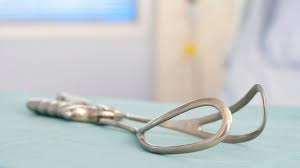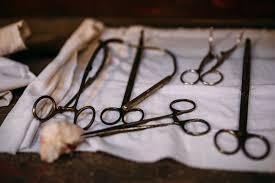Forceps are a crucial tool in the medical world, and they play an indispensable role in various procedures across multiple disciplines. From surgeries to dental work and childbirth, are used to grasp, hold, and manipulate tissues or other materials during medical interventions. This guide will offer an in-depth understanding of forceps, exploring their various types, uses, and their significance in medical practices.
What Are Forceps?
Forceps are a surgical instrument that resembles a pair of tweezers or tongs. They are designed to grip or hold onto tissues, objects, or materials, allowing for precision and control in medical procedures. Have been used in the medical field for centuries, evolving into specialized instruments that are now an essential part of many surgical and medical kits.
Although forceps come in a wide range of shapes and sizes, they generally fall into two main categories:
- Thumb Forceps (Non-locking Forceps): These are commonly used in surgeries to handle tissues or dressings. The user applies pressure with their thumb and fingers to grip objects, similar to how tweezers function.
- Locking Forceps (Hemostats or Clamps): These types of forceps have a locking mechanism that allows them to remain clamped onto tissues, blood vessels, or surgical material without needing constant pressure from the surgeon’s hand.
Now that we have an understanding of what forceps are, let’s explore the different types and their specific applications.
There are many different types of forceps, each designed for specific medical uses. Here is a look at some of the most common types of used in the medical field:
Dressing Forceps
Dressing forceps are typically used to hold dressings, bandages, or other types of materials during medical procedures. These are long and slender, allowing for easy handling of delicate materials in and around surgical sites. They are widely used in wound care and minor surgeries.

Tissue Forceps
Tissue forceps are designed to handle tissues during surgery without causing damage. They come with teeth or serrations that help grip the tissue securely. Tissue are essential in procedures where it is important to manipulate tissues carefully to avoid tearing or unnecessary trauma.
Hemostatic Forceps
Also known as clamps, hemostatic forceps are designed to control bleeding by clamping onto blood vessels during surgery. These forceps have a locking mechanism that keeps them closed once they’ve clamped onto a vessel or tissue. Common examples of hemostatic include the Kelly, Mosquito, and Crile forceps, which vary in size based on the blood vessel or tissue they are designed to clamp.
Obstetrical Forceps
Obstetrical forceps are a specialized type of forceps used in childbirth to assist in delivering a baby. These forceps are designed with rounded, spoon-like blades that can gently grip the baby’s head to guide it through the birth canal. Obstetrical forceps can be lifesaving tools in cases where labor becomes difficult or if the mother or baby is in distress.
Sponge Forceps
Sponge forceps are long with circular tips designed to hold surgical sponges or gauze. These are typically used to apply pressure on wounds or to clean areas during surgery. They are also used for procedures that involve the manipulation of sterile materials inside a wound or cavity.
Adson Forceps
Adson forceps are a type of thumb forceps that are used in surgeries requiring precision, particularly in plastic surgery and skin closure. They are designed to hold delicate tissues without causing damage. Their fine, pointed tips make them ideal for handling smaller structures.
Magill Forceps
Magill forceps are used primarily in anesthesiology to guide tubes during endotracheal intubation. These are angled, allowing the anesthetist to guide the tube accurately into the trachea or esophagus while maintaining visibility.
Dental Forceps
Dental forceps are specially designed tools used by dentists during tooth extractions. They come in different sizes and shapes to suit various teeth and procedures. Dental help in grasping and removing teeth from the socket with minimal trauma to surrounding tissues.
Common Uses of Forceps in Medicine
Forceps are used in a variety of medical procedures, from minor treatments to major surgeries. Here are some of the common uses of across different medical disciplines:
Surgical Procedures
In surgeries, are invaluable tools for manipulating tissues, controlling bleeding, and suturing wounds. Surgeons use different types of forceps depending on the procedure and the tissues they are working with. Tissue forceps, hemostatic forceps, and dressing forceps are often used in various stages of surgery.
Obstetrics and Gynecology
Obstetrical are critical in aiding deliveries during difficult labors. They can help rotate and guide the baby’s head through the birth canal when contractions alone aren’t sufficient. Gynecologists also use forceps during procedures such as colposcopies or in handling delicate tissues during surgeries.
Dental Procedures
In dental procedures, play a significant role in tooth extractions. Dental forceps are specifically designed to grip and extract teeth without causing excessive damage to surrounding bone and tissues. They also allow for controlled removal, minimizing the risk of breaking the tooth or damaging adjacent teeth.
Wound Care
In wound care, are used to apply dressings, clean wounds, and remove foreign objects like debris or sutures. Dressing forceps and sponge forceps are commonly used for these purposes.
Endoscopy and Anesthesiology
During endoscopy, can be used to retrieve objects from the gastrointestinal tract. Magill are particularly useful in anesthesiology for guiding tubes during intubation, ensuring the patient’s airway is secure.
Benefits of Using Forceps
Using forceps offers numerous benefits in medical practice. Some of the key advantages include:
- Precision: Allow for precise control during delicate procedures. They make it easier for healthcare professionals to grasp, hold, and manipulate tissues without causing damage.
- Versatility: There are forceps designed for almost every medical procedure, from simple wound dressing to complex surgeries, making them a versatile tool in medical settings.
- Reduced Risk of Infection: Enable healthcare professionals to handle tissues and materials without directly touching them, reducing the risk of contamination and infection during procedures.
- Time-Efficiency: In surgeries or childbirth, can save valuable time by quickly clamping blood vessels, removing foreign objects, or assisting in labor, reducing the risk of complications.
- Enhanced Safety: In emergency situations, such as obstructed labor or uncontrolled bleeding, can provide quick intervention, potentially saving lives.
How to Properly Use and Maintain Forceps
To ensure that forceps function effectively and safely, it’s crucial to follow proper usage and maintenance protocols. Here are some tips:
- Sterilization: Should always be sterilized before and after use to prevent infection.
- Proper Handling: Should be handled with care, using the appropriate amount of force to avoid tissue damage.
- Regular Inspection: Should be regularly inspected for signs of wear, damage, or rust. Damaged forceps can compromise patient safety.
- Storage: Store in a dry, sterile environment to avoid contamination and ensure they remain in good condition.
Conclusion
Forceps are an indispensable tool in the medical world, offering precision, control, and safety in a variety of procedures. From surgeries and dental work to childbirth and wound care, come in various types, each designed to fulfill a specific role. By understanding the types of forceps, their uses, and how to maintain them, healthcare professionals can continue to deliver high-quality patient care.
Whether you are a surgeon, a dentist, an obstetrician, or a nurse, the right type of forceps will always be at the heart of your medical toolkit, ensuring that procedures are carried out efficiently and safely.
